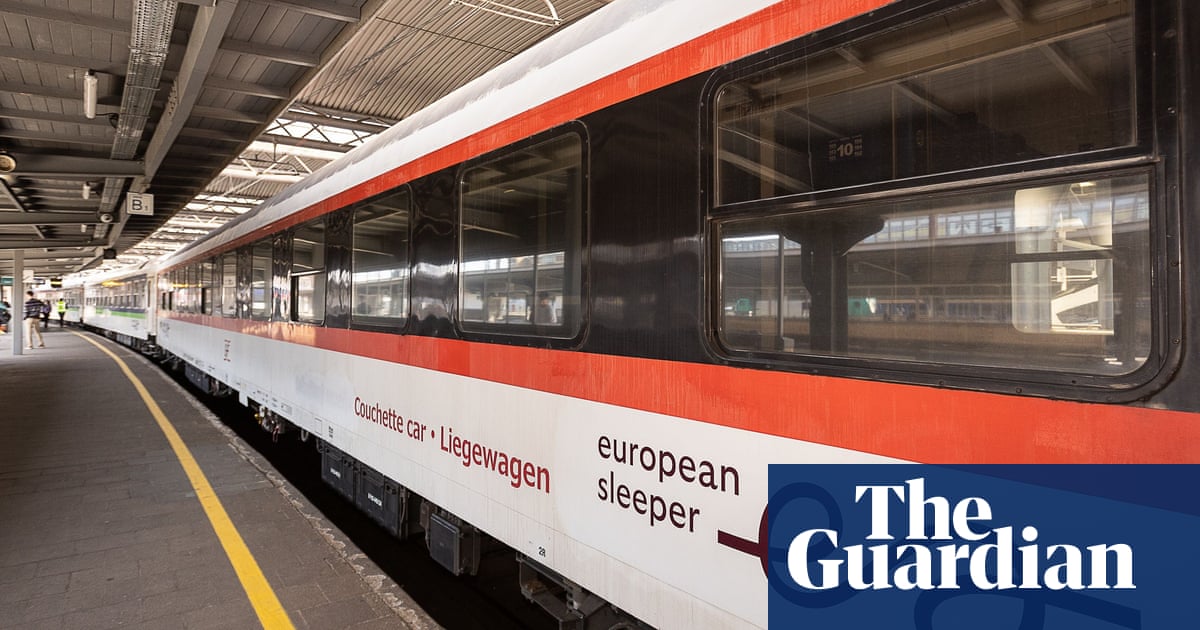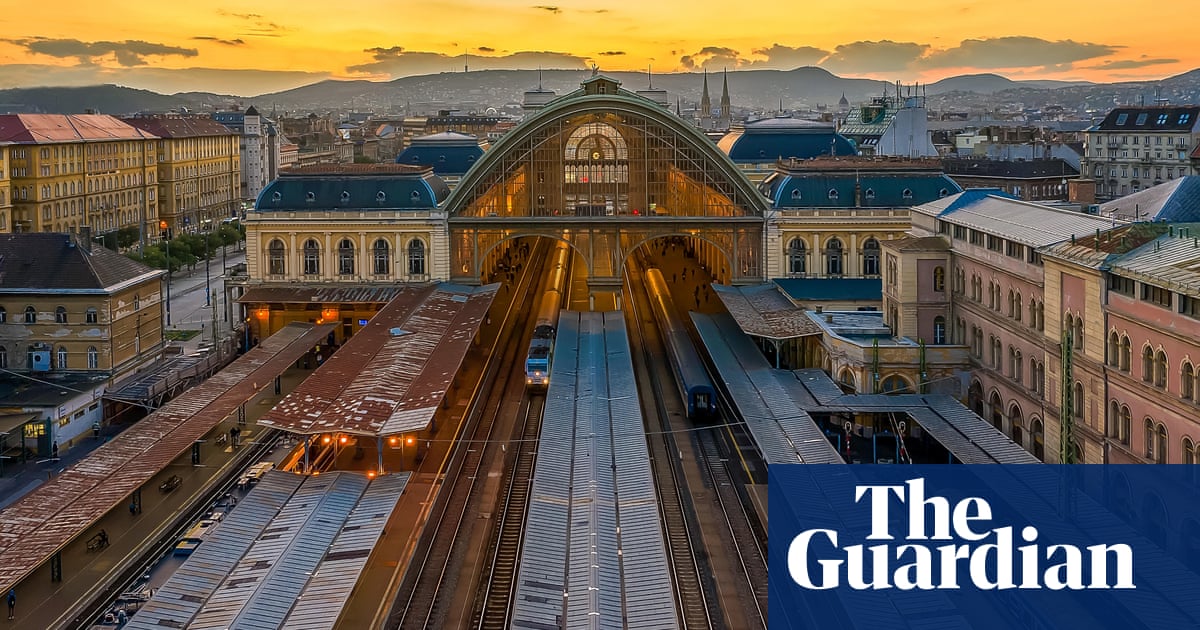
In the beer gardens of Berlin, night trains are a conversation topic almost as hot as how to get the Berghain bouncers to let you into their nightclub. (“Be a single man, be ‘alright’-looking, don’t smile,” I’m told.)
I’m in Prater Biergarten – the German capital’s oldest beer garden – reconnecting with a friend over pilsner and pretzels with butter injected into them. When I tell him I’m here to take the first European Sleeper to Brussels, perhaps the most hyped new route in the night train resurgence, he says he’s riding the same train next month. He tells me he feels guilty about taking loads of flights recently, so wants a less climate-crippling option. Plus, he says, “On a night train you can chill and just start drinking.”
Largely due to increased environmental awareness – as well as the reframing of slow overland journeys as enjoyable rather than endurable – this sleeper train revival is chugging healthily. Austria’s Nightjet now serves 25 European cities, and next year France’s Midnight Trains will launch luxury sleepers to 10 destinations.
European Sleeper’s Brussels to Berlin route runs three times a week each way and stops at Amsterdam and Rotterdam. The new line by the Dutch-Belgian startup is the first direct overnight train route between the Belgian and German capitals in more than a decade.
It’s now possible to jump on a two-hour Eurostar from London’s St Pancras station to Brussels-Midi station on a Friday afternoon, then catch the evening European Sleeper from the same Brussels station, and be in Berlin for breakfast. Leaving Berlin on Sunday night, you can again connect with Eurostar in Brussels and arrive in London Monday lunchtime, after a full weekend of Berlin culture/chaos.
Before taking the inaugural train from Berlin, I embrace the city’s hipster-capital status by staying at the new Selina Mitte hotel (dorm beds from €50; rooms from €98). Vinyl records and vintage clothes are sold in the lobby and tattoos are administered in the bar, but I spend my euros on mountainous cinnamon buns in the Zeit für Brot bakery, a few doors down. This may be the coolest city in the world: bakery staff look catwalk-ready as they bag €8 loafs.
However, my visit also coincides with the unveiling of a replica of the Pillar of Shame by Danish sculptor Jens Galschiøt (commemorating the 1989 Tiananmen Square massacre) and this highlights Berlin’s artistic clout, as well as its status as a human rights centrepoint. I watch Uyghur and Tibetan activists paint faces red on the statue, but the mood among the paintbrush-wielding crowd is of hope rather than horror. The monument will stand by the Axel Springer building until 22 June.
After a pilgrimage to the block that David Bowie and Iggy Pop lived in during the late 1970s, and their local cafe (now Neues Ufer: a gay bar with paintings of Bowie and graffiti tributes in the loos), I greet the European Sleeper prior to its scheduled 21.11 departure from Gesundbrunnen station. (In future the train will use Hauptbahnhof, but this summer it will sometimes be using Gesundbrunnen, due to track maintenance.)
The European Sleeper’s electric NS Class 86 engine is met at the platform like it’s arriving at a film premiere. Train obsessives, passengers, journalists, YouTubers and transport ministry officials whoop and clap. Members of Back on Track, which promotes night trains to address global heating, wave flags that read TRAINS NOT PLANES! as carriages clunk to a halt.
Also boarding are Chris Engelsman and Elmer van Buuren, European Sleeper’s founders. Engelsman’s love of night trains was stoked when travelling across Russia in his youth. “It’s cosy, it’s an adventure,” he says. “We expect to attract people who love train travel, love the adventure, who wouldn’t want to be stressing at airports. Just enjoying the ride.”
Engelsman says that the European Sleeper is not a luxury service, and has a smooth take on the lack of air conditioning in the train’s mid-range couchette carriages: seemingly the most popular ticket option. “You can open the windows,” he says. “It’s a better way to travel. A bit more romantic.”
With a return train trip from London to Berlin costing at least €250 – for European Sleeper couchette and Eurostar seats – for many passengers rail romance will beat any cost concerns. You can sometimes get a Ryanair flight from Stansted to Berlin for £50 return.
As the train leaves Gesundbrunnen I meet passengers Lisa Marie and Stefanie, who booked a six-seat cabin when their flight to London was cancelled. “I like the vibe,” says Lisa Marie, a student. “I’m thinking about doing this more. It’s better for the climate and it’s fun. You just get in, sit down, and it’s done.”
I ask Stefanie, a teacher, if she would consider taking a night train even without plane cancelations. She laughs: “I’d still take the plane. Faster is better.”
I’m lucky to have a three-berth cabin to myself. I enjoy night train natters, but have had too many moments of 3am soul-searching when staring at pungent feet hanging from berths. I retire to my room just before 10pm, window-watching the last of the day’s sunlight cast pink pastel shimmers on Großer Zernsee lake.
I enjoy one of the most comfortable nights I’ve had on the many night trains I’ve ridden. I’m 1.85 metres (6ft 1in) tall, but don’t have to lie with my knees slightly bent: my usual night train position. The cabin walls are thin, even by flimsy train standards, so I hear my neighbours with a clarity that could be awkward should they progress from small talk to truth or dare. Thankfully, they zip it pretty early.
The ride is smooth, especially considering most of the carriages were built in the 1960s. Just a couple of witching-hour jolts wake me. As we’re travelling in the Schengen area there are no passport checks or night-time loudspeaker announcements: ruinous elements of some night trains.
At 08.30 I happily wash my hair in my cabin’s sink before a great cold breakfast, included with my ticket, is delivered (there’s no dining carriage yet, just drinks sold by staff). Despite scrubbing my armpits with wet-wipes minutes earlier, eating Ardennes pâté on crackers before arriving in Brussels at 10.10, about 40 minutes late, feels rather sophisticated.
I stay overnight in the city, admiring the huge and hugely controversial masturbation murals by the Brussels-Charleroi canal, assumed to be by the street artist Bonom. Then equally impressive, less explicit, city views from the 22nd-floor bar of The Hoxton, Brussels. No tattoos are administered in this newly opened hotel, but it serves excellent Peruvian-inspired food.
Taking the Eurostar to London, I end a trip I can see many other UK-based travellers taking. European Sleeper’s founders are similarly confident – they’re extending the Brussels-Berlin service to Dresden and Prague in 2024. There are plans for a route to southern France and Barcelona, and soon tickets will integrate with Interrail passes.
All promising stuff. And if there’s no couchette air-conditioning on those new routes, either? Open the window: it’s romantic.











